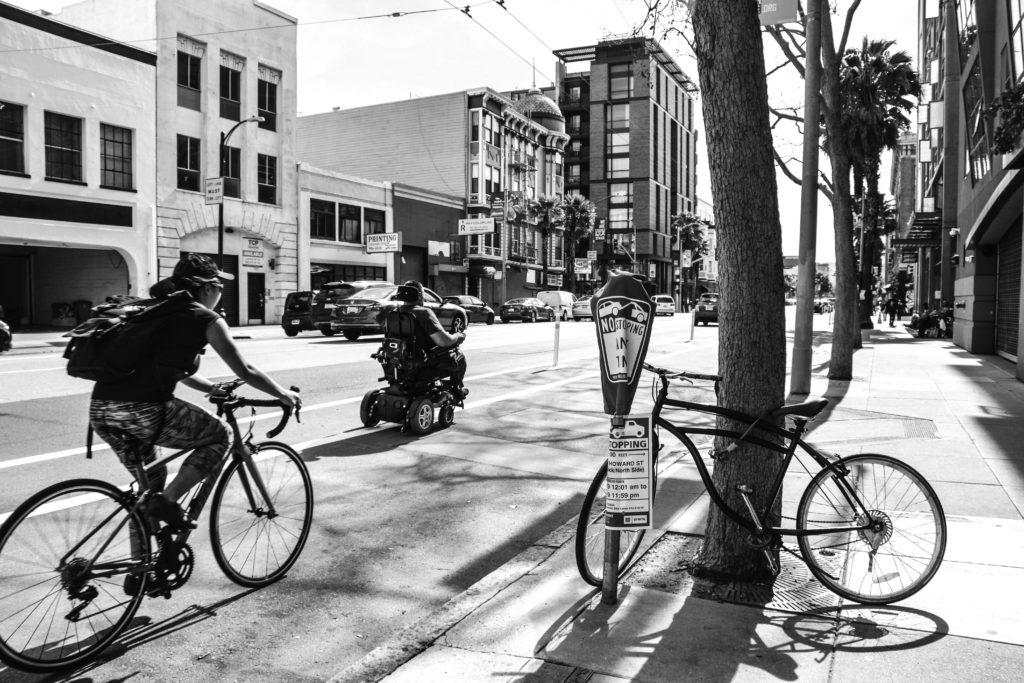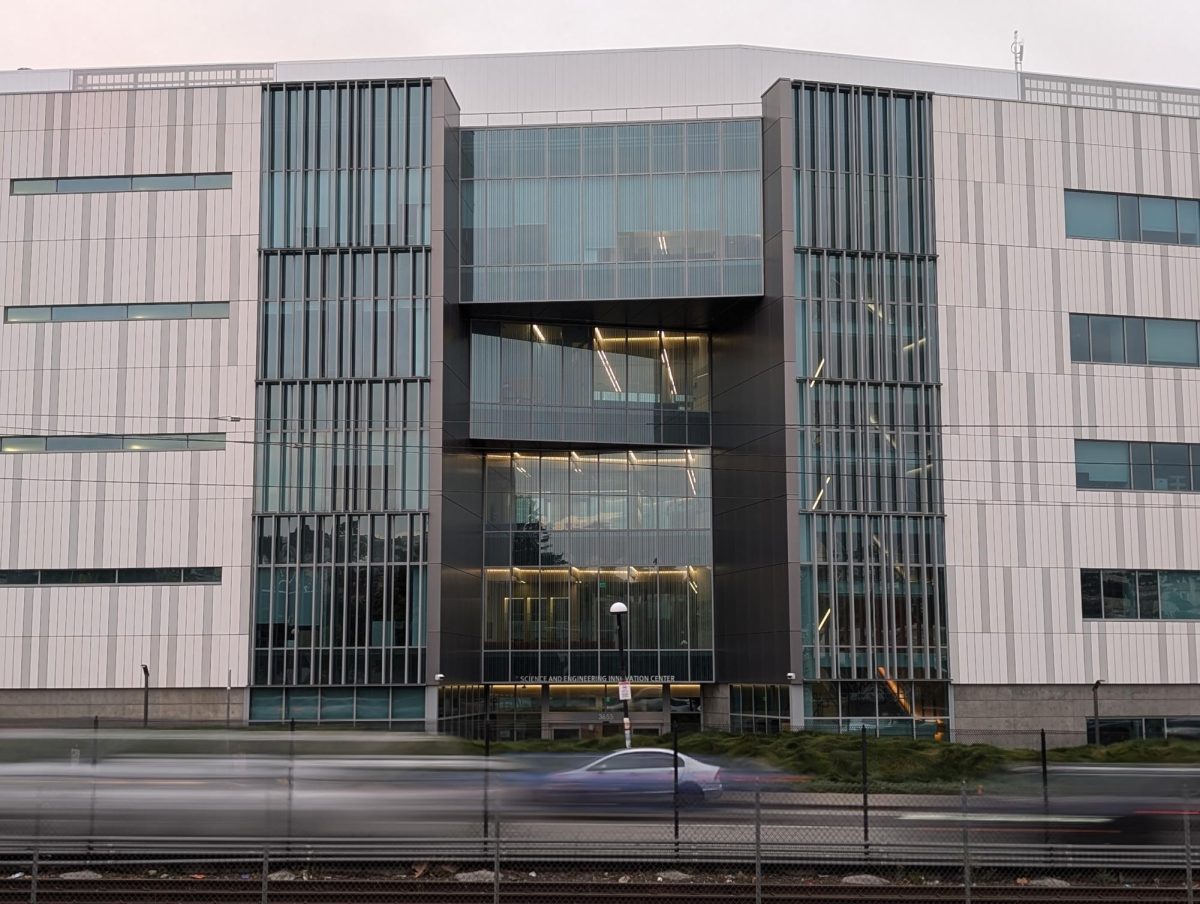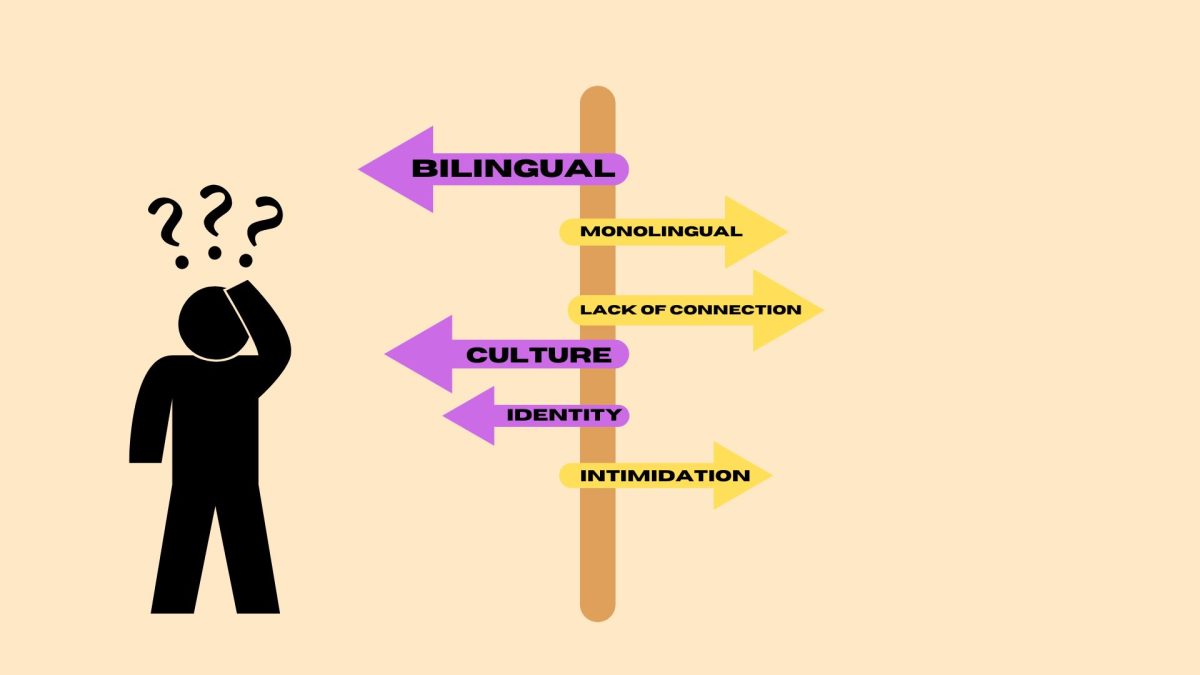Bicycle advocacy groups urged the city of San Francisco to add more protected bike lanes after a traffic collision killed a bicyclist riding down Howard Street on March 8.
A truck hit and killed bicyclist Tess Rothstein on Howard and 6th Street Friday morning. She was riding next to a row of parked cars when a vehicle’s door swung open and caused her to swerve into traffic.
Rothstein’s death marks the fourth traffic fatality on Howard Street within the past three years. Howard Street is known as a “high injury corridor”, a designation for the 13 percent of city streets responsible for 75 percent of traffic injuries in San Francisco, according to the San Francisco Municipal Transportation Agency.
The San Francisco Bicycle Coalition demanded city officials to improve bicyclist safety on Howard and Folsom streets by adding additional protected bike lanes and dedicated traffic signals.
“A protected bike lane would have saved this person’s life,” San Francisco Bicycle Coalition spokesperson Jennifer Gennari said. “Where infrastructure stops, people die.”
The coalition is holding a rally at city hall this Tuesday to push for complete bicycle lane protection on Howard and Folsom streets.
The SFMTA responded to the fatality by immediately restricting parking on the north side of Howard Street between 4th and 6th streets until a permanent protected bike lane can be approved for completion by early April.
San Francisco participates in an ambitious road safety program known as Vision Zero, which aims to completely reduce traffic fatalities
by 2024.
An average of 30 people die from traffic accidents in San Francisco every year and around 200 are seriously injured while traveling on city streets, according to Vision Zero.
San Francisco recorded 23 traffic fatalities in 2018 and Rothstein’s death is the sixth so far this year. The pedestrian advocacy group Walk San Francisco said Vision Zero isn’t acting fast enough to address this issue.
“The pace at which our city is delivering on Vision Zero is too slow, especially in the face of the massive influx of vehicles on our streets, and
we’re losing precious lives in the meantime,” said Walk San Francisco Executive Director Jodie Medeiros in a March 8 press statement. “Every
time we lose another innocent victim to traffic violence, it is a black mark on our city and its ideals for all people.”
The bike lane where Rothstein died on Howard and 6th streets are unprotected. Only two stripes of paint on the road separate it from traffic, according to SFMTA analyst Andy Thornley.
“It’s important to note that irony,” Thornley said. “If Tess had just gotten a couple hundred feet further down on Howard she would have been in a protected bike lane.”
Roughly 44,000 cyclists share the roads with vehicles on an average weekday, according to 2017 SFMTA data.
Bay Area traffic deaths rose by 43 percent between 2010 and 2016. San Francisco has one of the lowest fatalities per capita but also has one of the highest fatality rates per mile driven, according to the Metropolitan Transportation Commission.
Bike East Bay Advocacy Director Dave Campbell said pedestrian and bicyclist deaths are not taken as seriously as other transportation fatalities.
“The public is numb to it,” Campbell said. “The best thing we can do is slow cars down.”
Campbell said without slower speed limits and protected bike lanes, bicyclists are vulnerable to getting “doored” by parked vehicles or hit by drivers at busy intersections.
“In my opinion, cities are committing traffic engineering malpractice [by] pandering to parking needs and requiring people bicycling to dodge car doors and speeding traffic,” Campbell said.
The urban planning advocacy group Smart Growth America focuses on improving commuter access and safety in major metropolitan cities.
Smart Growth estimates drivers in the United States killed 49,340 pedestrians between 2008 and 2017, the “equivalent of a jumbo jet full of people crashing—with no survivors—every single month.”
Smart Growth’s National Complete Streets Coalition Director Emiko Atherton said city planning that prioritizes high traffic speeds over safety is to blame.
“All transportation deaths are preventable,” Atherton said. “We know how to solve that problem and it’s through better street design.”








Trevor W. Frith • Mar 19, 2019 at 3:46 pm
Could not stop in time. 19 pedestrians and cyclists will die today and every day in car-pedestrian/cyclist crashes mostly because of the flaws and inefficiencies (poor reaction time and stopping distance) of the right foot braking method which we are all forced to use when braking an electric or automatic transmission vehicle. There is no scientific justification for the right foot braking method other than ’that’s the way it’s always been taught’! NHTSA studied this issue and concluded that female drivers have the biggest problem with this braking method (and male drivers as well if the research had been completed). But instead of continuing to blame female drivers why are they not looking for a solution by testing this braking method against the much safer, simpler and more efficient left foot braking method? Perhaps ME TOO is not the only victim of a male systemic belief.